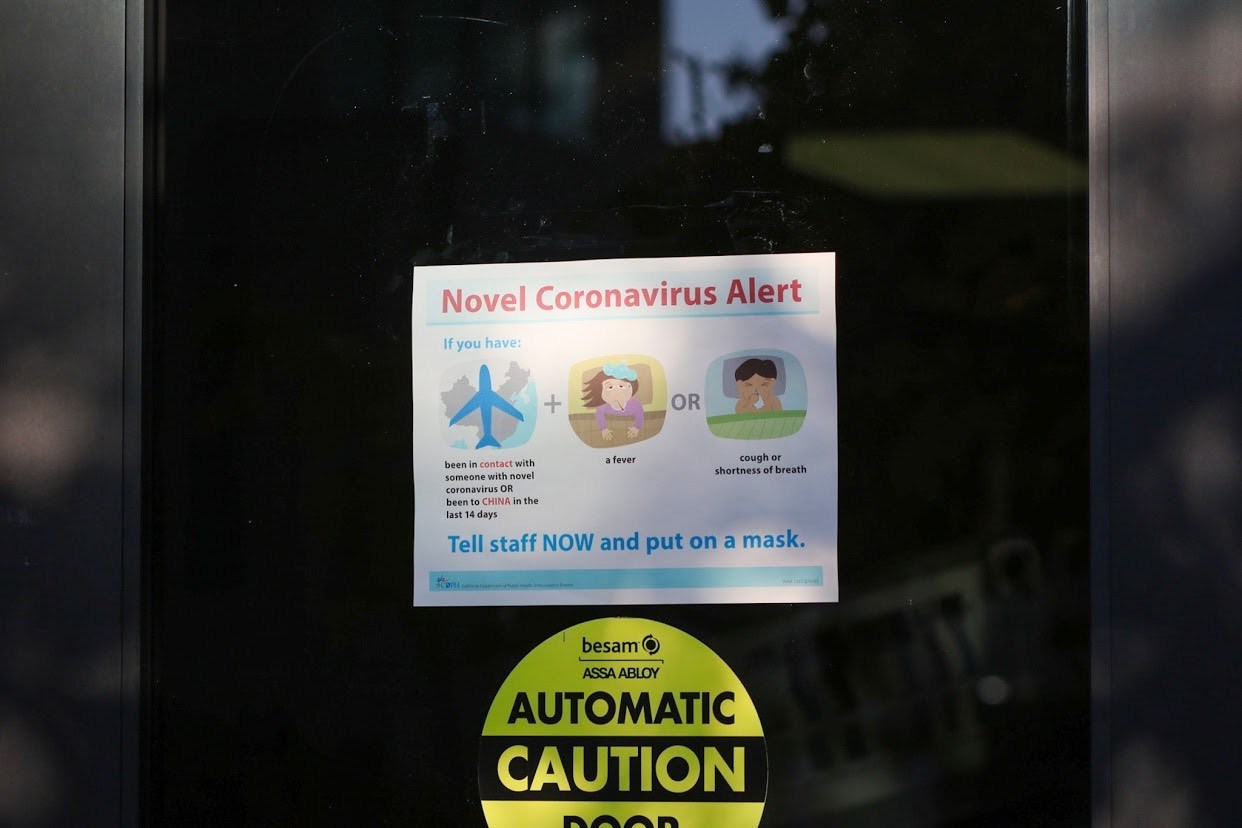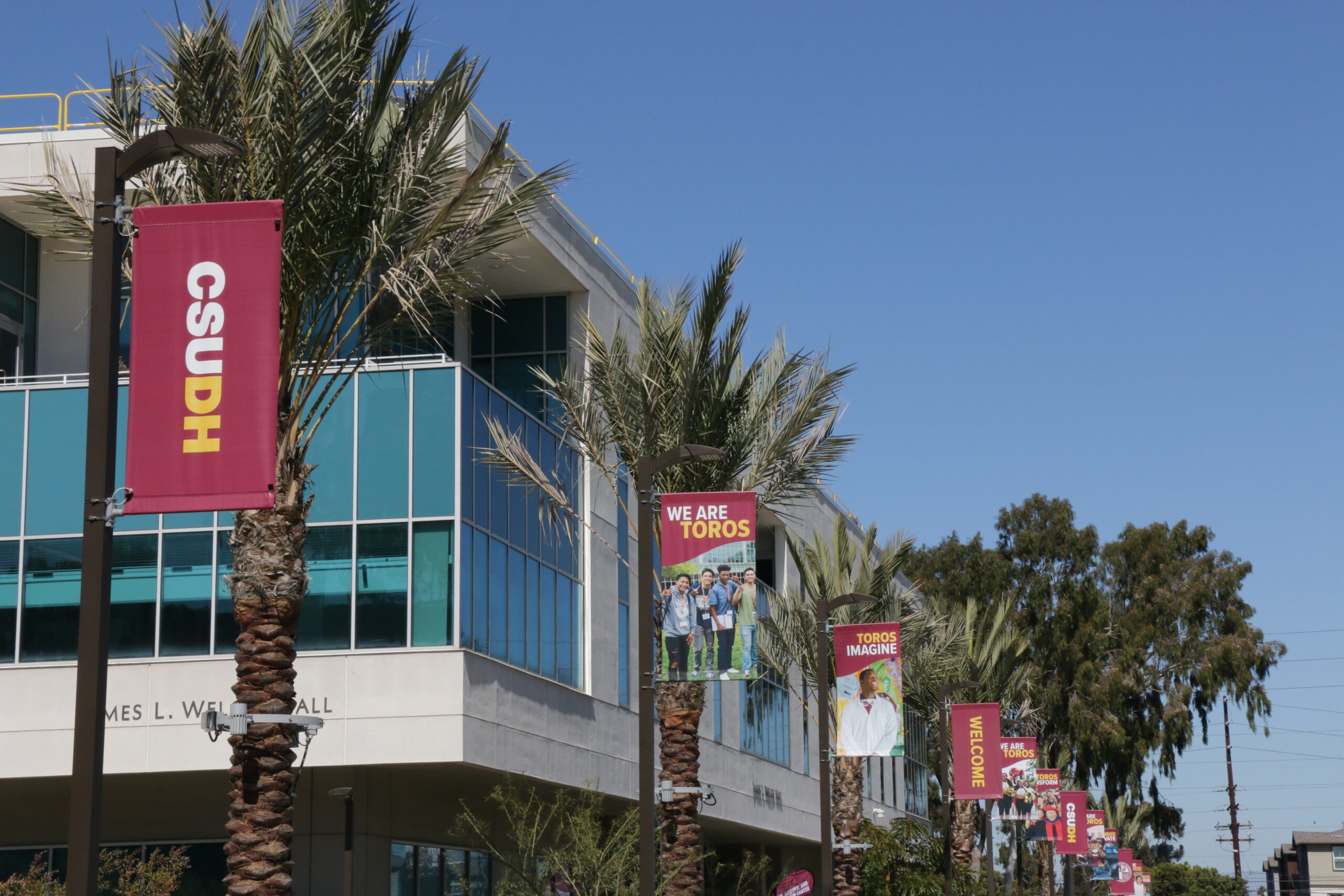For more than 40 years, the Women’s Resource Center has been an intimate space on campus for Toros to relax, study, and find fellowship with one another. Although the WRC’s current space is located at the far end of campus, in the Classroom Village by parking lot 7, the organization makes strides to connect with the Dominguez Hills community.
March marks Women’s History Month – a time to recognize and celebrate the stories and achievements of women around the world. All month long, the WRC has hosted events to not only commemorate women’s history, but also raise greater awareness of the organization on campus.
The WRC traces its own history back to 1972, when it was founded as the Women’s Educational Center. Over the years, the center has gone through its share of changes and locations, with a few starts and stops along the way. In 1974, the center was located in the Natural Sciences & Mathematics building but then moved to the University Commons in 1983. There was also a temporary space set up in the Immigrant Justice Center.
The WRC’s decorated lounge space has several amenities for students, including a lending library, a lactation room, hygiene products, scantrons, and even a kitchenette. The vibe is welcoming by design. For Jocy Martinez, a third-year audio engineering student, the WRC is a “safe space.” Martinez said she stops by the center every week because of how calm and quiet it is. She just wishes the spot was in a more central location on campus.
“I mean, it is kind of a pain to walk across the campus,” she said. “It is a bigger space, you know, so I get it, but at the same time it would be nice if it were closer.” Martinez added that she was actually surprised by the size of the WRC and the extent of resources offered. WRC program coordinator Alyeska Gutierrez Estrada said the organization is big on community building.
“You could study here, but we also just want you to be able to connect with other people on campus,” Estrada said.
Prior to the center’s grand re-opening at the Village last semester, the WRC operated out of the Leo F. Cain Library, albeit without a physical space. Although the WRC was glad to have a dedicated space once again, attracting attention to the new location presented a bit of a challenge. There has been good foot traffic in the area, Estrada said, but not nearly enough for what the center wants to do.
“It is not ideal that we’re all the way at the end of campus,” Estrada lamented. Estrada also spoke about the other culture and identity centers being closer in proximity to one another in the Loker Student Union and how that allows them to connect more easily.
Still, the WRC makes the most out of its current space. Estrada said the center works to “meet students where they’re at” and has employed social media like Instagram and TikTok to connect with Toros and increase visibility on campus. The center will also adjust its programming to accommodate what seem to be the needs of students.
The recent “Mix ‘n’ Mingle” event, for example, offered Toros the opportunity to meet new people on campus. The center’s monthly “Chick Chat” provides time and space for students to talk and build community with one another. The WRC has also partnered with the Latinx Cultural Resource Center to host “Cister to Sister,” a workshop on how to be an ally for transgender women.
With Women’s History Month, the WRC is also putting on programs like the “Women’s Market” on Mar. 28, which highlights women entrepreneurs by allowing them to sell their products in the parking lot by the WRC.
On Mar. 20, the WRC also hosted “The Miseducation of Black Womanhood” event in collaboration with the Black Resource Center. Fifth-year human services student Jalyn Coleman said the event aimed to destigmatize and reshape the mindset of Black women in regards to their daily lives in and out of campus.
“We talked about anti-blackness and misogyny within the community,” Coleman said. “We talked about how we wanted to reframe those mentalities that we were taught growing up.”
Women’s empowerment and promoting gender equity and inclusivity on campus is another key function of the WRC. Coleman noted that the Toro Nation can support the WRC by advocating for them and continuing to support women on campus.
“Advocating for the Women’s Resource Center to be put in the LSU,” Coleman said. “Advocating so that students who need our services are able to come get our services
without the hassle of running across campus.”
The WRC plans to continue making its presence known on campus after Women’s History Month. On Apr. 18, the center will host the annual “Take Back the Night” event to support survivors of sexual assault, domestic violence, and abuse. The program will kick off with a sign-making event at the center. Other upcoming events include a cap decorating workshop for graduating Toros and “Career Chat” workshops.
In the meantime, Estrada said the WRC will continue to provide space and resources for all Toros while working to uplift women at Dominguez Hills. She said it’s important for people to know that women shouldn’t just be celebrated once a month but rather, all year long.
“This should be a year-long thing where we’re showing up for them – where we’re challenging patriarchy, where we are being allies but also accomplices to each other, where we’re showing up.”
===
FINAL VERSION ABOVE
===
For more than 40 years, the Women’s Resource Center has been an intimate space on campus for Toros to relax, study, and find fellowship with one another. Although the WRC’s current space is located at the far end of campus, in the Classroom Village by parking lot 7, the organization makes strides to connect with the Dominguez Hills community.
March marks Women’s History Month – a time to recognize and celebrate the stories and achievements of women around the world. All month long, the WRC has hosted events to not only commemorate women’s history, but also raise greater awareness of the organization on campus.
The WRC traces its own history back to 1972, when it was founded as the Women’s Educational Center. Over the years, the center has gone through its share of changes and locations, with a few starts and stops along the way. In 1974, the center was located in the Natural Sciences & Mathematics building but then moved to the University Commons in 1983. There was also a temporary space set up in the Immigrant Justice Center.
The WRC’s decorated lounge space has several amenities for students, including a lending library, a lactation room, hygiene products, scantrons, and even a kitchenette. The vibe is welcoming by design.
For Jocy Martinez, a third-year audio engineering student, the WRC is a “safe space.” Martinez said she stops by the center every week because of how calm and quiet it is. She just wishes the spot was in a more central location on campus.
“I mean, it is kind of a pain to walk across the campus,” she said. “It is a bigger space, you know, so I get it, but at the same time it would be nice if it were closer.” Martinez added that she was actually surprised by the size of the WRC and the extent of resources offered.
WRC program coordinator Alyeska Gutierrez Estrada said that the organization is big on community building.
“You could study here, but we also just want you to be able to connect with other people on campus,” Estrada said.
Prior to the center’s grand re-opening at the Village last semester, the WRC operated out of the Leo F. Cain Library, albeit without a physical space. Although the WRC was glad to have a dedicated space once again, attracting attention to the new location presented a bit of a challenge.
There has been good foot traffic in the area, Estrada said, but not nearly enough for what the center wants to do.
“It is not ideal that we’re all the way at the end of campus,” Estrada lamented. Estrada also spoke about the other culture and identity centers being closer in proximity to one another in the Loker Student Union and how that allows them to connect more easily.
Still, the WRC makes the most out of its current space. Estrada said the center works to “meet students where they’re at” and has employed social media like Instagram and TikTok to connect with Toros and increase visibility on campus. The center will also adjust its programming to accommodate what seem to be the needs of students.
The recent “Mix ‘n’ Mingle” event, for example, offered Toros the opportunity to meet new people on campus. The center’s monthly “Chick Chat” provides time and space for students to talk and build community with one another. The WRC has also partnered with the Latinx Cultural Resource Center to host “Cister to Sister,” a workshop on how to be an ally for transgender women.
With Women’s History Month, the WRC is also putting on programs like the “Women’s Market” on March 28, which highlights women entrepreneurs by allowing them to sell their products in the parking lot by the WRC. On Wednesday, March 20, the WRC also hosted “The Miseducation of Black Womanhood” event in collaboration with the Black Resource Center. Fifth-year human services student Jalyn Coleman said the event aimed to destigmatize and reshape the mindset of Black women in regards to their daily lives in and out of campus.
“We talked about anti-blackness and misogyny within the community,” Coleman said. “We talked about how we wanted to reframe those mentalities that we were taught growing up.”
Women’s empowerment and promoting gender equity and inclusivity on campus is another key function of the WRC. Coleman noted that the Toro Nation can support the WRC by advocating for them and continuing to support women on campus.
“Advocating for the Women’s Resource Center to be put in the LSU,” Coleman said. “Advocating so that students who need our services are able to come get our services without the hassle of running across campus.”
The WRC plans to continue making its presence known on campus after Women’s History Month. On Apr. 18, the center will host the annual “Take Back the Night” event to support survivors of sexual assault, domestic violence, and abuse. The program will kick off with a sign-making event at the center. Other upcoming events include a cap decorating workshop for graduating Toros and “Career Chat” workshops.
In the meantime, Estrada said the WRC will continue to provide space and resources for all Toros while working to uplift women at Dominguez Hills. She said it’s important for people to know that women shouldn’t just be celebrated once a month but rather, all year long.
“This should be a year-long thing where we’re showing up for them – where we’re challenging patriarchy, where we are being allies but also accomplices to each other, where we’re showing up.”


